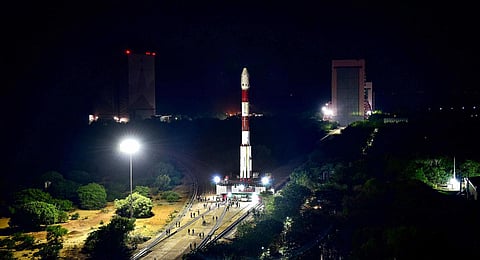

BENGALURU: The Aditya-L1 left the Earth’s orbit on Tuesday and has commenced its 110-day journey to the Sun’s Lagrange Point -1 (L1). The Indian Space Research Organisation (ISRO) performed the crucial Trans-Lagrangean Point 1 Insertion (TL1I) maneuvre successfully. The key manoeuvre which took place at 2:00 am on Tuesday slingshot the spacecraft out of Earth’s orbit in the direction of the sun.
“The spacecraft is now on a trajectory that will take it to the Sun-Earth L1 point. It will be injected into an orbit around L1 through a manoeuvre after about 110 days,” said ISRO in a statement on X.
After 110 days another manoeuvre will place the spacecraft in a halo orbit around the L1, where the gravitational forces of the Sun-Earth produce enhanced regions of attraction and repulsion, cancelling each other's forces of power. This phenomenon will help Aditya- L1 to remain in a non-obstructive position with minimal fuel consumption.
The space agency also informed that this is the fifth consecutive time ISRO has successfully transferred an object on a trajectory toward another celestial body or location in space.
Meanwhile, ISRO’s Supra Thermal and Energetic Particle Spectrometer (STEPS) instrument, a part of the Aditya Solar Wind Particle Experiment (ASPEX) payload onboard the Aditya-L1, had already begun the collection of scientific data. The data collected during Earth’s orbits will help scientists to analyse the behaviour of particles surrounding the Earth, especially in the presence of the magnetic field of Earth.
“STEPS comprises six sensors, each observing in different directions and measuring supra-thermal and energetic ions ranging from 20 keV/nucleon to 5 MeV/nucleon, in addition to electrons exceeding 1 MeV,” said ISRO in a statement.
The payload was activated on September 10, 2023, at a distance greater than 50,000 km from Earth. This distance is equivalent to more than eight times the Earth's radius, placing it well beyond Earth's radiation belt region, informed the space agency.
After completing the necessary instrument health checks, data collection continued until the spacecraft had moved farther than 50,000 km from Earth.